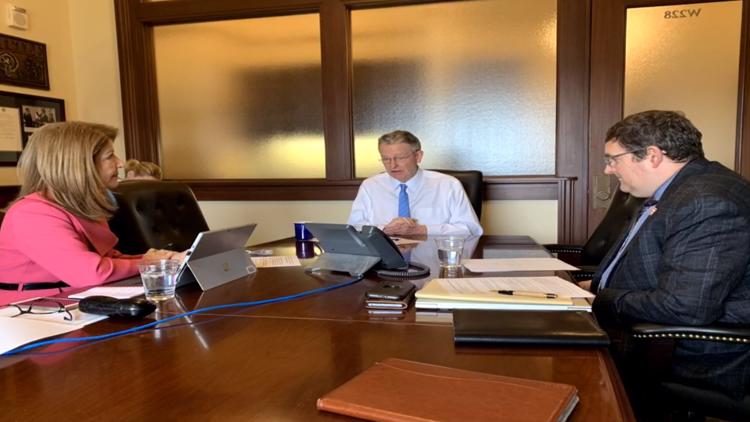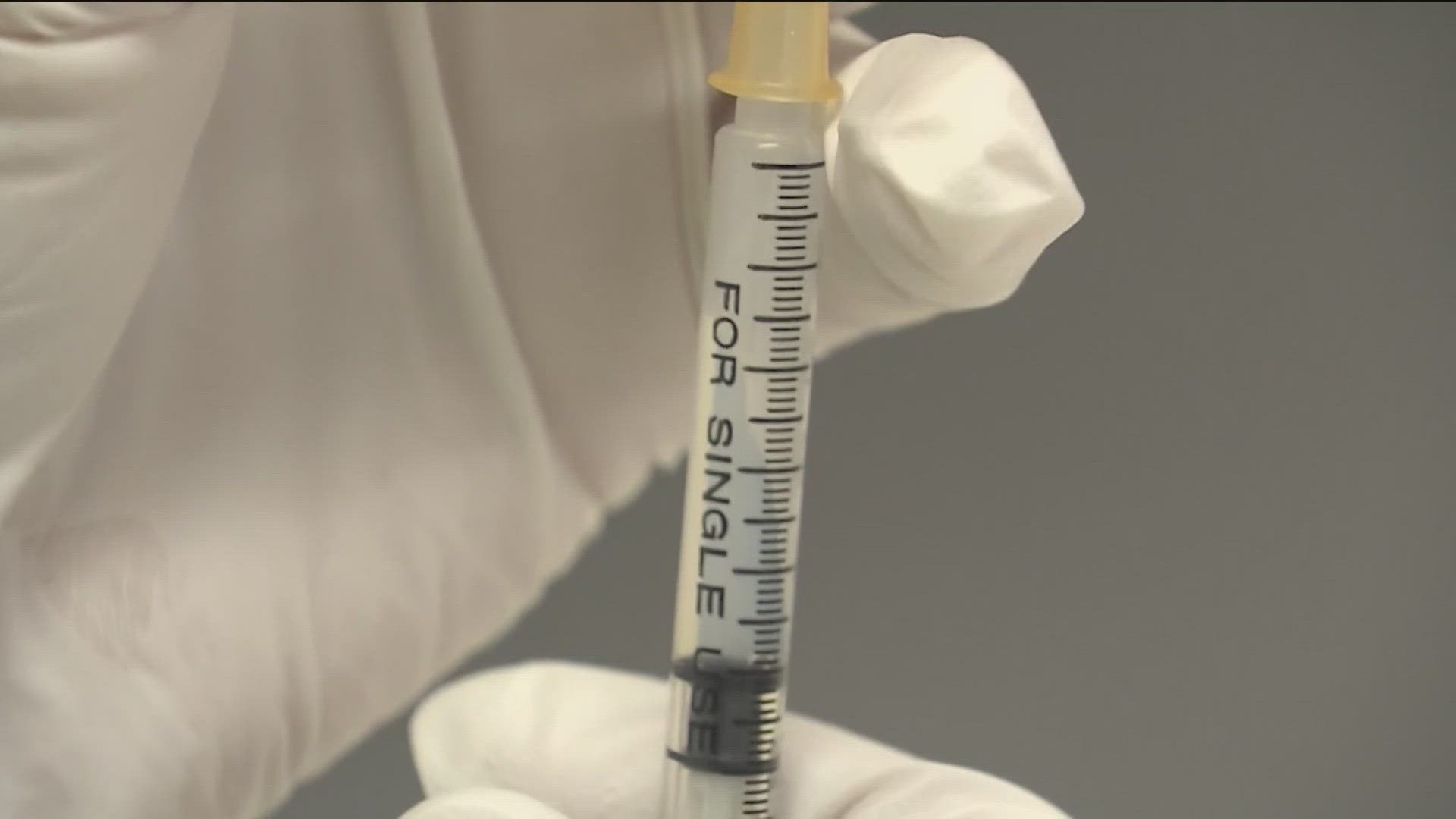BOISE, Idaho — Gov. Brad Little fielded questions about the novel coronavirus from nearly a dozen worried Idahoans around the state on Tuesday, March 31, in his third weekly statewide teleconference with the Idaho AARP.
They ranged from a disabled woman in Horseshoe Bend who, along with several others she knows, received an eviction notice in the last three days; to an 82-year-old tax accountant in Post Falls who’s worried that sole proprietors like her are being forgotten as far as government aid to ease the pandemic’s impact; to a Ketchum resident concerned that her area has more and more infections but just one ventilator and two intensive care unit beds.
“We’re in a war zone and we have no ammunition to fight this virus here,” the Ketchum woman said. “It’s really horrifying to know that there’s no health care here, there’s no health care for us in Blaine County and Ketchum.” She said she knows people “that have the virus, and have been told to stay home and not get the test,” because there’s not enough testing capacity. “We are really suffering here in Blaine County,” she said.
Little responded, “Obviously, our heart goes out to Blaine County.” He said, “The lack of testing is a problem everywhere.”
The governor said he took a “pretty deep dive” into that and found Idaho was “about in the middle” for testing per capita, “but that’s number’s going way up. There were some unfortunate circumstances early about … the out-of-state labs. Those are being cured.”
“We do know that we should be seeing the dividends of the stay-at-home order pretty soon, because the first one was in Blaine County,” Little said.
Idaho Health & Welfare Director Dave Jeppesen, who chairs Little’s Coronavirus Work Group, said, “We’ve had that order in place for over a week. … We are seeing the dividends in that we have not overrun the health care capacity that exists. … That’s something we track every day,” including availability and use of ICU beds and ventilators, he said.
Jeppesen said “surge capacity” has been identified at hospitals in Twin Falls and the Treasure Valley to serve Blaine County patients, if needed. And he said a statewide program through which health districts maintain a “medical reserve corps” of experienced people who can be called back into service has been activated in Blaine County, to compensate for health care workers who have been infected or quarantined.
“We’ve said many times our testing capacity is not what we would like it to be,” Jeppesen said. But, he said, “Several things have happened over the weekend and the last couple days that will help us increase testing capacity.”
Those include several new testing “platforms” approved by the FDA. “The latest one actually uses equipment that is available in many doctor’s offices,” Jeppesen said. “This will help us expand testing capability, and we know that we need that.”
“As soon as they get those supplies, they’ll make that testing available,” he said.
Idaho Department of Labor Director Jani Revier said additional federal unemployment benefits for people whose livelihood has been impacted by the pandemic is on its way, but isn’t yet available in Idaho. Those include Pandemic Unemployment Assistance, for people who aren’t eligible for regular unemployment benefits; emergency compensation benefits providing an additional $600 per week to unemployed workers; and an extra 13 weeks of benefits for those who exhaust their regular unemployment benefits.
“We are waiting for further guidance from the U.S. Department of Labor before we can implement them in Idaho,” Revier said. “Once we receive that, we have to update our systems. … We hope to be doing this later this week or as soon as possible.”
On evictions, Little reiterated his recent statements that he advises landlords not to evict people now because with the “turmoil in the market … there might not be someone to take their place.” He also said courts likely wouldn’t prioritize holding eviction hearings now.
The Horseshoe Bend woman said, “We’ve tried to fix it with our landlords,” but found they “don’t understand quarantine. There’s people that can’t go look at another apartment, much less have the money to move. … Myself, I’m disabled. … I don’t want to be out there.”
Little said, “Some states have looked at this. We are still seriously considering it.” He added, “There’ll probably be more forthcoming both from the federal government and what we’re doing from the state.”
Other questions focused on everything from when church services can resume — Little advised offering them online — to how Little will determine when to end his statewide stay-at-home order.
“Our goal is to get some sense of normalcy as soon as possible,” the governor said, “but if we try to do it too soon, we could have another wave or another bump in stresses in our health care system that could be worse, because we’ve already got community spread.”
“We’ve got it in Blaine County, got it in Kootenai County, got it in the Treasure Valley — we’ve got it all over,” he said.
If you enjoy reading articles like this one from our partners at the Idaho Press, please consider subscribing to them for newspaper delivery or digital access to help ensure stories like this are told.
More from our partners at The Idaho Press: Breaking Chains Academy aims to end the cycle of gang violence
At KTVB, we’re focusing our news coverage on the facts and not the fear around the virus. To see our full coverage, visit our coronavirus section, here: www.ktvb.com/coronavirus
Facts not fear: More on coronavirus
See our latest updates in our YouTube playlist:



